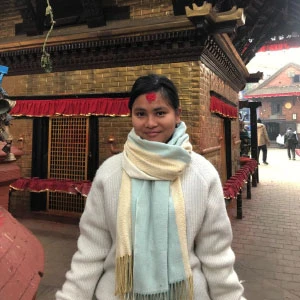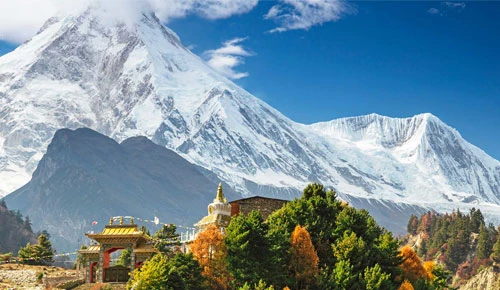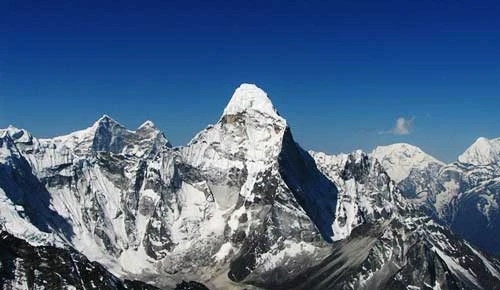Island Peak Climbing for Beginners: Step-by-Step Summit Guide
Island Peak, also known as Imja Tse, is one of the most popular beginner-friendly climbing peaks in the Everest region of Nepal, attracting trekkers who want to take their Himalayan adventure to the next level. Located within the stunning Sagarmatha National Park, this 6,189-meter peak offers the perfect balance between trekking and mountaineering—making it an ideal choice for first-time climbers who want a real Himalayan summit experience.
The journey to Island Peak vis EBC takes you through iconic Sherpa villages like Namche Bazaar, Tengboche, Dingboche, and Chhukung, following sections of the legendary Everest Base Camp trekking trail. With breathtaking views of Ama Dablam, Lhotse, Makalu, and even Mount Everest, Island Peak Climbing provides a rare combination of scenic beauty, cultural immersion, and achievable adventure.
What makes Island Peak the top choice for aspiring mountaineers is its beginner-friendly structure that still delivers a thrilling alpine challenge. The route includes glacier walking, fixed-line climbing, and a final summit ridge that teaches essential mountaineering skills in a safe and guided environment—perfect for new climbers preparing for bigger peaks in the future.
The Island Peak Climbing Package typically includes acclimatization days, pre-climb training from professional guides, climbing permits, and a well-planned itinerary that gradually leads you to Island Peak Base Camp and then to the summit. Whether you're looking for a step-by-step mountaineering introduction or a Himalayan peak that prepares you for future ascents like Mera Peak, Lobuche Peak, or even Ama Dablam, Island Peak is the ultimate starting point.
Where Is Island Peak Located? – Beginner-Friendly Overview of the Khumbu Region
Island Peak is located in the eastern Himalayan region of Nepal, within the heart of the Khumbu Valley, one of the most iconic and accessible mountain regions in the world. Positioned between the towering giants of the Lhotse and Imja Glacier, the peak sits near the small settlement of Chhukung, making it a natural extension for trekkers heading deeper into the high-altitude valleys of the Everest area. Its strategic location provides beginner climbers with a smooth transition from trekking paths to glaciated mountaineering terrain without overwhelming them with technical challenges.
The Khumbu Region itself is known for its dramatic landscapes, high Himalayan passes, and vibrant Sherpa culture. As you move closer to Island Peak, the trail opens up to wide glacial plains, pristine alpine lakes, and panoramic views of Lhotse, Nuptse, Baruntse, and other majestic peaks. The mountain sits along a route that naturally encourages acclimatization, making it especially suitable for first-time climbers preparing for high-altitude ascents. With well-marked paths, supportive lodges, and easy access from Lukla, the Khumbu region offers a safe yet adventurous environment for anyone beginning their mountaineering journey.
Table of Contents
Is Island Peak Climbing Suitable for Beginners?
Island Peak is widely considered one of the best introductory climbing peaks in Nepal, offering a balanced mix of trekking and basic mountaineering that beginners can comfortably handle with proper preparation. While it does involve glacier travel, the use of fixed ropes, and a final steep headwall, these sections are manageable with the guidance of experienced climbing instructors. The route provides an ideal first experience for those aiming to transition from high-altitude trekking to Himalayan mountaineering, making it a top choice for aspiring climbers who want a safe, achievable, and rewarding summit.
Here are the key point why climbing Island Peak is suitable for first time climbers:
- Suitable for beginners with good fitness and basic training
- Offers essential mountaineering experiences like crampon use, rope work, and glacier walking
- High success rate due to well-structured acclimatization and guided support
- Managed with proper acclimatization days and professional guidance
- Less technical compared to peaks like Ama Dablam or technical 6000-ers
- Ideal stepping stone for future climbs such as Mera Peak and Lobuche Peak
- Safe, well-established route in the Everest region
- Requires strong determination, altitude awareness, and proper preparation
Best Time to Climb Island Peak for First Timer
The best time to climb Island Peak for beginners is during the stable and clear climbing seasons of spring (March to May) and autumn (September to November). These months offer the safest weather conditions, mild temperatures, and the best visibility—crucial factors for first-time climbers attempting a Himalayan peak. During spring, the trails across the Sagarmatha National Park come alive with blooming rhododendrons, greener valleys, and warmer daytime temperatures, making the trek from Namche to Tengboche, Dingboche, and Chhukung both scenic and comfortable. This season also provides excellent stability on the glacier section, easier navigation, and lower wind speeds near the summit. Spring is especially recommended for beginners because guides can conduct longer training sessions at Island Peak Base Camp without extreme cold.
Autumn (fall) is equally popular and is widely considered the peak season for Island Peak climbing due to its crisp air, dry weather, and crystal-clear mountain views. From late September to November, the skies remain consistently clear, offering stunning views of Lhotse, Makalu, Ama Dablam, and the surrounding Khumbu peaks throughout the journey. The temperature is colder than in spring but stable—ideal for glacier crossings and rope-assisted climbing on the summit headwall. Autumn also aligns with the busiest trekking months, meaning the trails from Lukla to Island Peak Base Camp are active, lodges are open with full services, and weather-related delays are minimal. For beginners, this season provides the most reliable conditions, making summit success rates higher.
Island Peak Climbing Itinerary for Beginners (Day-by-Day Guide)
Kathmandu to Namche Bazaar
The first part of your Island Peak trekking journey begins with a scenic flight from Kathmandu to Lukla, one of the most thrilling and picturesque flights in the world. From Lukla, you start your trek to Phakding and gradually climb to Namche Bazaar, often referred to as the Sherpa capital of the Himalayas. Namche Bazaar is a crucial stop for acclimatization due to its altitude (3,440m), giving your body time to adjust to thinner air. Short acclimatization walks to nearby attractions such as Sagarmatha National Park viewpoints, local monasteries, or even the Everest View Hotel can help your body adapt while also offering panoramic views of the surrounding Himalayan peaks.
This section of the trek between Lukla and Namche Bazaar is full of visual delights: suspension bridges over rushing rivers, glimpses of traditional Sherpa villages, prayer flags fluttering in the wind, and the first up-close views of towering mountains like Thamserku and Kangtega. You’ll also encounter the unique local culture, with bustling market streets and friendly Sherpa hospitality, making this part of the trek a perfect introduction to both the landscape and the people of the Everest region.
Tengboche to Dingboche and Chhukung
From Namche, you continue along quieter trails toward Tengboche, famous for its monastery and awe-inspiring views of Mount Everest and Ama Dablam. The hike to Tengboche is gentle enough for beginners, yet visually rewarding, as it passes through rhododendron forests, open meadows, and more Sherpa settlements. After a brief stay, you trek further to Dingboche and Chhukung, ideal locations for rest and further acclimatization. These villages provide a peaceful Himalayan atmosphere surrounded by snow-capped peaks, giving trekkers the chance to breathe in fresh mountain air and soak in the serene beauty of the Khumbu Valley.
The trail from Tengboche to Dingboche also highlights the diversity of the Everest region, passing through yak pastures, streams, and traditional stone houses, allowing trekkers to experience the quiet rhythm of mountain life. Spending a night in Dingboche or Chhukung prepares your body for higher altitudes and gives you the mental and physical rest needed before tackling the more technical sections of Island Peak.
Acclimatization and Training
To prepare for the summit, most beginners climb Chhukung Ri (5,550m). This short peak is perfect for acclimatization, offering breathtaking views of Ama Dablam, Lhotse, Nuptse, and Island Peak itself. After this, you proceed to Island Peak Base Camp, your gateway to climbing the peak. At Base Camp, you will receive essential climbing training for beginners, including ice axe techniques, rope climbing, and walking with crampons on icy slopes.
This training is vital for building confidence and ensuring safety while ascending the 6,189-meter peak. Guides will demonstrate step-by-step climbing techniques, teach proper use of equipment, and familiarize you with high-altitude trekking challenges. Even first-time climbers gain the skills and mental preparedness needed to attempt the summit with a strong sense of security.
Summit Day
The most exciting part of the journey begins before dawn on summit day. Wearing headlamps, harnesses, and crampons, you navigate steep ice slopes, narrow ridges, and rocky sections under the guidance of experienced climbing instructors. The final push to the summit is challenging but immensely rewarding.
Once at the top of Island Peak (6,189m), the panoramic sunrise view over the Himalayas, including Everest, Lhotse, Nuptse, and Ama Dablam, is simply unforgettable. The sense of accomplishment at reaching a Himalayan summit for the first time is exhilarating. After celebrating the summit, you carefully descend back to Base Camp to rest and recover, carrying memories of an adventure that is both physically demanding and spiritually uplifting.
Step-by-Step Summit Guide: How to Climb Island Peak
- Start your summit attempt in the early hours, usually around midnight to 2 AM, to take advantage of firmer snow and avoid afternoon winds.
- Begin the climb from Island Peak Base Camp (5,087m), crossing the moraine and following the well-marked trail toward the glacier.
- Put on your crampons and carry an ice axe as you enter the glacier section, carefully navigating crevasses and ice ridges.
- Use the fixed ropes and ladders installed on tricky sections of the glacier, while maintaining balance and following your guide’s instructions.
- Continue the ascent toward the steep snow slope, often referred to as the headwall, which requires careful climbing and rope techniques for safety.
- Pause for acclimatization breaks and hydration during the climb, as altitude sickness can affect first-time climbers.
- Reach the final summit ridge, where careful foot placement and teamwork are crucial for a safe finish.
- Celebrate reaching the Island Peak summit (6,189m), take photos of surrounding peaks like Ama Dablam, Lhotse, and Everest, and enjoy the panoramic views.
- Begin your descent along the same route, taking extra caution on the glacier and headwall sections, especially during melting hours when snow can become soft.
- Return to Island Peak Base Camp, rest, and recover before trekking back to villages like Chhukung, Dingboche, and Namche Bazaar.
- Follow post-climb recommendations from your guide, including proper hydration, gentle walking, and monitoring for any altitude-related symptoms.
- Ensure all gear is properly packed and returned if rented, and complete necessary permit and registration check-outs for the Sagarmatha National Park authorities.
- End the adventure with a descent to Lukla, marking the successful completion of your Island Peak climbing journey.
Technical Skills Needed for Island Peak Climbing
- Ability to use crampons efficiently on icy and mixed terrain during glacier walks and steep slopes.
- Proficiency with an ice axe for self-arrest techniques, balance, and climbing support on snowy and icy sections.
- Basic rope handling skills, including tying knots, clipping into fixed ropes, and using harnesses safely.
- Experience or training in walking on crevasses and glacier navigation, including recognizing unstable snow bridges.
- Familiarity with fixed-line climbing on steep sections, such as ladders or headwalls, using a harness and carabiners.
- Understanding and application of belaying techniques for safe ascent and descent in technical sections.
- Ability to use jumars (ascenders) and rappel safely for steeper portions of the climb.
- Basic knowledge of mountaineering safety protocols, including altitude sickness prevention and emergency response.
- Physical capability to handle long ascents at high altitudes, maintaining balance and stamina on mixed terrain.
- Mental preparedness for exposure to high-altitude environments and challenging weather conditions.
- Ability to follow professional guide instructions for safe movement on narrow ridges and steep slopes.
- Knowledge of proper self-rescue techniques in case of slips or minor falls on icy or rocky terrain.
- Familiarity with layered clothing and gear management to maintain safety and comfort during technical climbing segments.
Essential Tips for Beginners
1. Acclimatize Properly
Gradual acclimatization is crucial for avoiding altitude sickness. Plan rest days at key, important stops like Namche Bazaar, Dingboche, and Chhukung on your days off. To help your body adjust to the high altitude, plan short treks to nearby peaks like Chhukung Ri. Avoid ascending too quickly, and keep paying high attention to symptoms like headaches, nausea, or tiredness. You should consume calorie-dense meals, get adequate sleep, and drink lots of water to help your body adapt to the change. Ascending the mountain the right way will give you more energy, help you think more clearly, and make you safer, all of which will assist you in reaching the top. Rushing makes the trek less fun and raises the risk of getting AMS.
2. Hire Experienced Guides
If you're climbing for the first time, professional guides and Sherpas are invaluable for first-time climbers. They provide you with climbing gear, help you use it correctly, keep an eye on safety while you climb glaciers, and help you get to the top. The guides are also familiar with weather patterns, route conditions, and emergency procedures. Sherpas assist with logistics, carry equipment, and offer moral support. In addition to carrying equipment and offering moral support, sherpas help with planning. Their knowledge makes learning more fun and lowers your risk. If you've never climbed before, it's safer and more organized to go with guides who know what they're doing. It also gives you more confidence when climbing difficult terrain and enables a higher likelihood of a successful summit.
3. Pack Smart
Efficient packing ensures you are comfortable, safe, and able to move around while you climb if you pack well. If the weather changes, put on thermal base layers, fleece mid-layers, and waterproof shells in that order. You should bring both personal items, like sunscreen, gloves, sunglasses, and a first-aid kit, and technical gear, like crampons, a harness, an ice axe, and a helmet. Carry a light backpack and trekking poles to prevent fatigue. Don't overpack too much; carrying a lot of weight will make you tired and slow you down. Smartpacking helps you stay prepared for sudden weather changes, emergencies, or problems at high altitudes. These tips will make it easier and more fun to go trekking every day.
4. Stay Hydrated & Eat Well
Hydration and nutrition are critical at high altitudes. Drink at least 3 to 4 liters of water every day to stay hydrated, which can make altitude sickness worse. Consume high-calorie, easily digestible foods like nuts, energy bars, rice, and soups to keep your energy up. Instead of big meals, eat smaller ones more often. Furthermore, don't drink too much alcohol or caffeine. You will be able to get through challenging times with strength and focus if you drink enough water and eat well. This will help you be more adaptable, focused, and able to last longer. Ignoring hydration or diet increases fatigue and reduces the likelihood of safely completing the summit.
5. Practice Technical Skills
Even beginner-friendly climbs like Island Peak require basic mountaineering skills. Familiarize yourself with crampons, ice axes, and harness use before summit day. Find out how to walk on snow and ice, use a rope, and stop yourself. You feel safer and more confident when you train at Base Camp with a guide nearby on steep, icy slopes. When climbers have good technical skills, they can safely deal with unexpected terrain. These skills lower the risk and make things go more smoothly. Practicing early will help novices feel more prepared and relaxed on the summit day.
6. Respect Weather & Timing
The weather in the Himalayas can change quickly and dramatically. Monitor forecasts closely, and follow your guide’s advice about when to climb or descend. Summit attempts should begin pre-dawn to take advantage of stable conditions, avoid afternoon snowstorms, and maximize visibility. Recognize that bad weather is a valid reason to postpone or turn back. Respecting weather and timing decisions enhances safety, ensures better climbing conditions, and protects against fatigue or altitude complications. To climb the Himalayas safely and successfully, you need to be patient and be able to bend over.
7. Respect Local Culture & Environment
Engaging respectfully with Sherpa communities enriches your climbing experience. When you talk to or take pictures of locals, visit monasteries, or shop at local stores, be polite. Maintain environmental responsibility by not littering, staying on designated trails, and minimizing waste. You can make friends, get help, and have a better time when you respect other people's cultures. Sustainable and culturally conscious trekking protects both communities and the Himalayan environment while creating positive memories and connections during your adventure.
8. Listen to Your Body
When you're climbing at high altitudes, it demands attentiveness to physical signals. If you're tired, dizzy, have a headache, or are having trouble breathing, you should rest or slow down. Your altitude sickness could get worse or even cause an accident if you push through symptoms. Follow a steady pace, stop often, and be honest and communicate with your guides. By paying attention to your body, you can avoid emergencies, get used to the altitude, and have the best trek possible. One important thing you can do to lower your risks and climb Island Peak safely is to listen to your body.
Conclusion
Island Peak is the ideal beginner expedition to a Himalayan summit, challenging enough to test your limits yet achievable with the right guidance and preparation. This Island Peak climbing guide for beginners ensures you understand each stage of the journey, from the first steps in Lukla to the exhilarating summit.
Whether you’re chasing your first Himalayan sunrise or preparing for future expeditions, Island Peak climbing will give you confidence, memories, and a true sense of adventure in the heart of Nepal.
Start your Island Peak adventure with Nepal Trek Adventure today and make your Himalayan dream come true.








